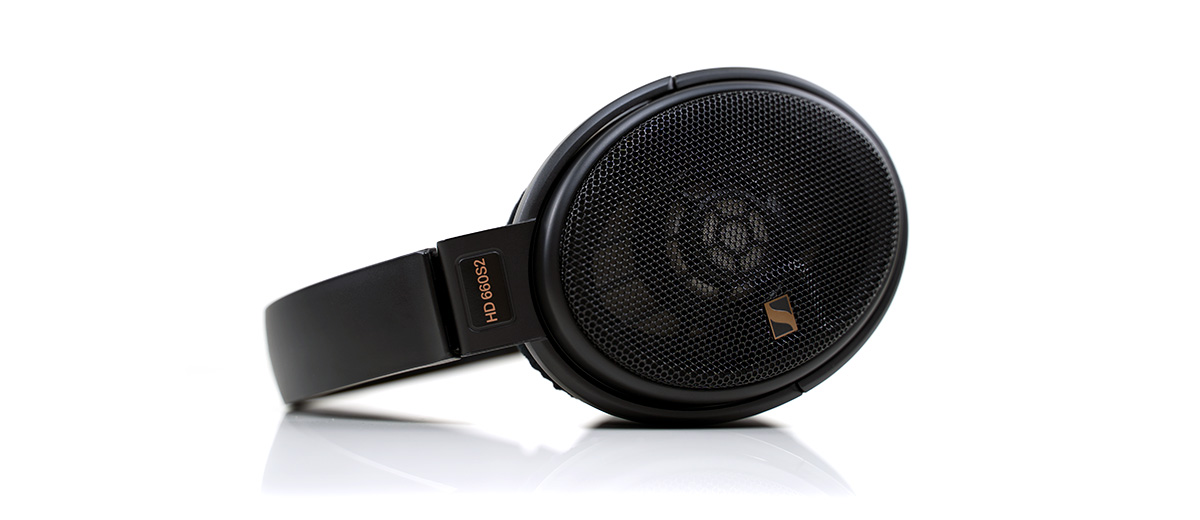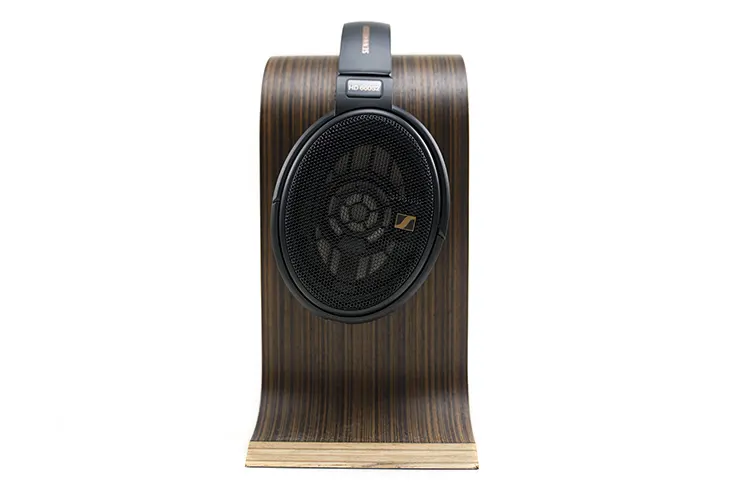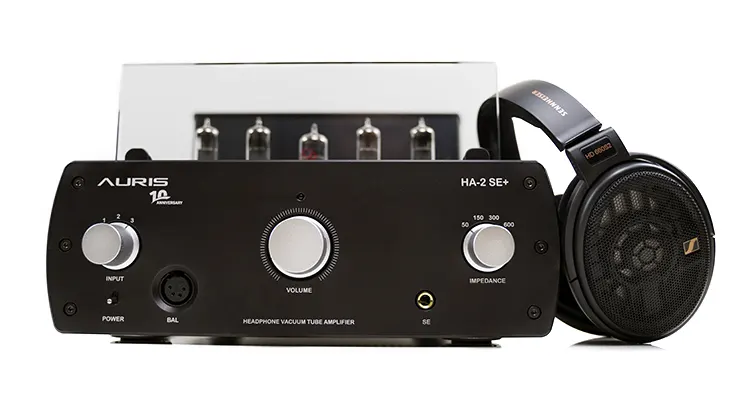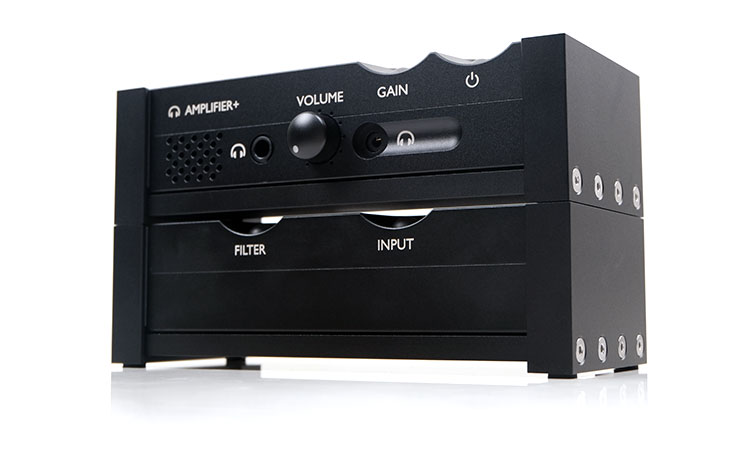Sound Impressions
The following sound impressions of the Sennheiser HD 660S2 were completed using the Auris Audio HA-2SE+ and the Feliks Audio EUFORIA evo for amplification. For our source input, we used a mix of the Chord Electronics Qutest DAC and the iBasso DX320 MAX Ti balanced line out.
Summary
In almost every way the HD 660S2 is a noticeable upgrade on the original HD 660S but it still hits differently when compared to the classic HD 600 and HD 650 models.
If I had to make a subjective judgment on where the HD 660s2 sits in the lineup tonally I would say somewhere in between the older units with perhaps more of a bias to the HD 650.
It does have its own distinct tonal quality, one which is relatively smooth throughout but with a much-improved presence and weight on both ends of the spectrum compared to the original.
The presentation has improved gravitas with a better sub-bass performance, less of a tinny punch on the mid-bass, and a more even treble tuning. Importantly, a treble tuning that is relatively smooth and even balanced without any perceived heavy roll-off.
I also appreciate the generally improved perception of clarity from the HD 660S2 throughout. The midrange presence is not as forward as say, the HD 600, or as fulsome as the HD 650, but it does have more perceived space to play with.
This allows background instrumentation and peripheral spatial cues to make their presence felt a lot more on the HD 660S2 than the original could muster. Yes, the 3-5k dip in its tuning might dim the detail for certain tracks, but a few dB in that region via PMEQ helps a lot.
The HD 660S2 is not hugely difficult to drive but I would default to a tube amplifier, (modern SETA or ideally OTL), to maximize that 300Ω load and performance. Not only do you get a better impedance match but tonally, they can introduce some beautiful sweetness or staging expanse to the HD 660S2 tuning.
Frequency Response
The FR of the HD 660S2 has two distinct differences between it and the original HD 660S and that is the additional emphasis on the lows and the highs.
This was a key takeaway for Sennheiser based on the original’s tuning and feedback from their users and to some extent that has been remedied with up to 10 dB on the 20-30Hz range and anywhere from 1-5 dB upswing from 5k onwards.
Depending on where the HD 660S had its strongest treble dips, the HD 660S2 sounds more filled-in over these bands and less uneven in the highs as a result.
The 2-4k range is relatively neutral to slightly dipped and I do wonder if this was to ensure the additional treble energy did not seep too far into the mids coloration to prevent any undue sharpness.
That being said, this is a cleaner tone in the mids compared to the HD 650 for sure, but still relatively smooth sounding in its own right and far less aggressive compared to the more mid-forward sound of the HD 600 in that same region.
Up to 500Hz, the HD 660S2 makes its difference felt over the original with a far tastier bass response. You can hear that difference right away with improved presence and body though it’s still not a bass cannon by any means. The missing fundamental in lower register instruments is there now and the mid-bass punch sounds a lot healthier also.
Timbre
The HD 660S2 timbre delivers a better lower-order fundamental combined with improved treble presence than the HD 660S.
It’s still a relatively smooth tonal quality but the extreme ends of the harmonic order have been given a bit of lift and as such it sounds tonally more accurate to me for most instruments.
You might pick up on that in terms of how you perceive the decay rate of notes which are slightly shorter, or the weight and control of the mid-to-sub bass response; two important factors in a better level of PRaT from the HD 660S2 compared to the original tuning.
There is a degree of transparency in there also in terms of source and amplifier matching. The last thing you want to do with the HD 660S2 is either underpower it in terms of voltage or pair it with a lean and bright amplifier.
Anything that strips additional bass weight from its sound signature will upset the tonal balance and timbre of its performance.
For example, amplifiers such as the OTL Feliks Audio EUFORIA evo did better for me than the Auris Audio HA-2SE+ in terms of retaining an excellent bass weight and midrange richness from the HD 660S2.
I would gravitate to the HA-2SE+ if I want more energy through the mids and some might value that but it does shave off a bit of bass weight in the process.
One small thing timbral oddity I did pick up is a subtle harmonic dissonance over the upper mids and vocals. Just a little bit of 5-6k treble sheen that can get exaggerated if you plan to EQ that 2-4k range upwards by a few dB. You hear less of it on warmer amplifiers such as the Chord Anni and EUFORIA evo with no EQ.
Staging & Dynamics
I have to say the HD 660S2 staging ability has much improved over the older model though it is still a relatively intimate soundstage per se. The increase in the FR at both ends produces a taller and deeper effect that in turn, opens up the mids in terms of perceived space also.
The fundamental is much more pleasing now with lower register instruments now being easier to pick up and they do have a noticeable impact in terms of where your ear gets drawn to for specific passages of music.
The additional treble presence introduces a cleaner tone to peripheral spatial cues making them much easier to pick out. It is no longer just about the mids with the HD 660S2, it’s about everything else around it.
Where some might quibble is the reduced midrange presence, particularly the upper-mids compared to the likes of the HD 600. I suspect the desire to try and open up the soundstage and give the HD 660S2 user a more expansive presentation was another factor in reducing any potential mid-forward aggression.
And it does work for me, at least on some of the music I listen to but not everything. For modern recordings with heavy bass and mids separation, the HD 660S2 offers a perceivably improved sense of pace and timing compared to the HD 660S as well as sharpening the accuracy and depth of the peripheral imaging.
For other tracks, usually hard rock with male vocals, I do find I need some additional dB on a PMEQ peaking filter at around 3-4k to really open up the presence of the HD 660S2 mids. Just watch the timbral energy of the percussion does not become too invasive in the process.
Synergy
Efficiency
The Sennheiser HD 660S2 is rated at 300Ω with an SPL of 104 dB @1 kHz, 1 Vrms. That is a 150Ω increase over the original HD 660S and in line with the classic HD 600 and HD 650 models.
Ideally, you want to avoid a huge impedance mismatch with your source/amp to ensure the HD 660S2 is being optimally driven in terms of load matching. This headphone loves quality voltage but at 104 dB it’s efficient enough so current won’t be an issue either.
The HD 660S2 is actually several dB more efficient on paper compared to the original HD 600 rate at 97 dB @1kHz 1Vrms SPL. However, on amplifiers such as the Auris Audio HA-2SE+, with its ability to impedance match at 300Ω I did not pick up too much of a difference in their general sensitivity levels.
The HD 650 is also less sensitive at 103 dB @1 kHz, 1Vrms compared to 104 dB for the HD 660S2 with the same weighted benchmark @1kHz 1Vrms.
That might not seem much but with the impedance matched at 300Ω on the Auris Audio HA-2SE+, I had an impression that the HD 650 needed a bit more juice to volume match the HD 660S2.
Tube Amplifier Pairings
I am assuming the HD 660S2 driver is rated at a maximum of 200mW in terms of power handling and in line with the HD 600 and HD 650 driver specs. That should mean any desktop amplifier that can deliver a bit of headroom around 200-300mW on a 300Ω load will drive these headphones quite well.
However, coloration also plays a role so my personal preference is to pair the HD 660S2 with a good-quality transformer-coupled SETA or an OTL design, both of which are tube amplifier designs that excel with high-impedance dynamic driver headphones.
Amplification Suitability
Three excellent pairing examples of this are the Auris Audio HA-2SE+ and the Feliks Audio EUFORIA evo; both tube amplifiers with a good voltage-bias and single-ended Class A designs, one a SETA, (HA-2SE+), and the other an OTL, (EUFORIA evo).
The EUFORIA evo is capable of up to 280mW of SE output power with 20 dB of gain into a 300Ω load so that is more than enough for the assumed maximum wattage rating of the HD 660S2 dynamic driver. Its output PO is also rated at 65Ω so it is not an amplifier well suited to low impedance headphones either.
The HA-2SE+’s output power is slightly different at 1W consistent at all impedance levels with a specific 300Ω setting to correctly match the impedance load of the HD 660S2. You can tell its gain level is also quite strong and from my testing, there does seem to be a lot more volume headroom with the HD 660S2 compared to the EUFORIA evo.
A pairing I do recommend you try is the SETA Cayin HA-300MK2. Although unlikely to be a common primary pairing scenario the HD 650S2 might well be seen as an additional headphone to add to an existing collection for use with this setup.
This an amplifier that also has an impedance adjuster with a rated 6W from its high impedance value using its 4.4mm PO and one that is designed to specifically target 300Ω headphones
Tonal differences
The key differences will come down to tonal shaping between these two. Both are generally smooth-sounding amplifiers with the HD 600S2, however, comparatively, the HA-2SE+ brings a slightly more neutral sound and imaging experience with a stronger midrange focus. If you feel the HA-2SE+ needs improved midrange energy and presence this would be my pick.
The EUFORIA Evo is more relaxed in its delivery through the mids and highs, sounding a little warmer and more euphonic than the Auris amplifier. What it does offer is enhanced sub-bass presence on the HD 660S2 with a little more ‘grandiose’ in its staging dimensions which I am quite fond of.
Probably the most impressive pairing was Cayin’s HA-300MK2 SETA tube amplifier with its impedance adjuster set to high using the HD 660S2’s 4.4mm terminated cable.
The impressive low-end dynamics and a spacious and holographic midrange give the HD 660S2 a magical combination of the HA-2SE+ sweet sparkle and the EUFORIA evo’s depth and expansive staging properties in one pairing.
It is not a thick and dense low-end delivery but the impressive levels of texture and detail combined with the dCS Bartok LO as its source were truly elegant and highly expressive. It is also the most expansive pairing I have ever heard from this headphone.
Solid-State Pairings
The Chord Electronics Anni, combined with the Qutest, will have no problems delivering enough power to the HD 660S2 driver with just under 200mW into a 600Ω and an assumed 350-400mW into a 300Ω equivalent. You just have to be aware that its output impedance is much lower than the aforementioned tube amplifiers, (sub-1Ω).
Still, the performance is actually very good though not as spacious sounding as the tube amplifiers. Some credit does need to be given to the Qutest DAC here which I have always found to introduce a nice dynamic snap on the lows combined with excellent height.
Overall, this is a fun-sounding and generally smooth to warm-sounding pairing that meshes well with the HD 660S2 lower treble tuning and adds some welcome vocal presence. It also has a stronger emphasis on teasing out the HD 660S2’s improved bass response to produce a meaty and satisfying fundamental.
The only thing missing is the holographic depth and level of separation to the HD 660S2’s soundstage which the tube amplifiers did better at and it is something I feel these headphones can benefit from.
Solid-state does not have to be welded to the desk to get a good performance out of the HD 660S2. For example, the iBasso DX320 MAX Ti has excellent output power with a 9Vrms rating, or around 270mW into 300Ω balanced, which is enough to power the HD 660S2 properly.
You will still need to set the gain to its highest setting though to ensure you do not run out of volume headroom with this pairing.
Once sorted, the micro-detail is exquisite with this pairing, teasing out better levels of separation compared to the Anni. However, the warmth from the bass presence is reduced with a stronger focus on midrange clarity and staging height.
Click on page 3 below for our selected comparisons.






